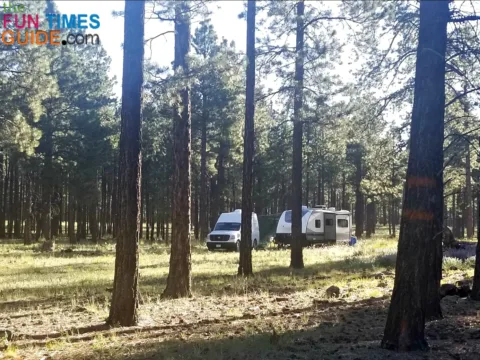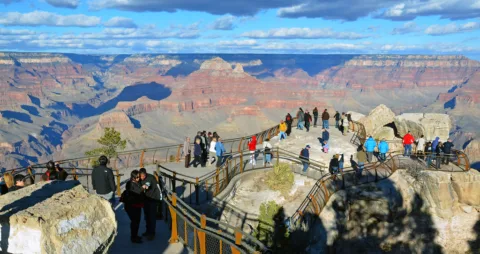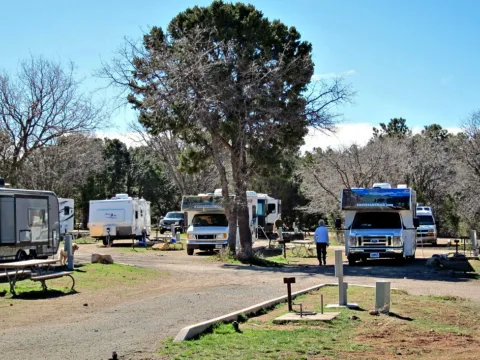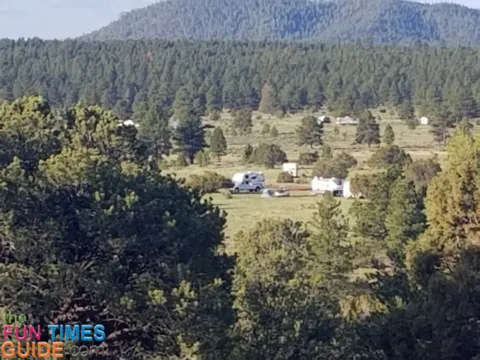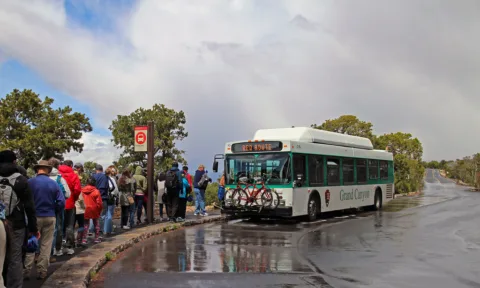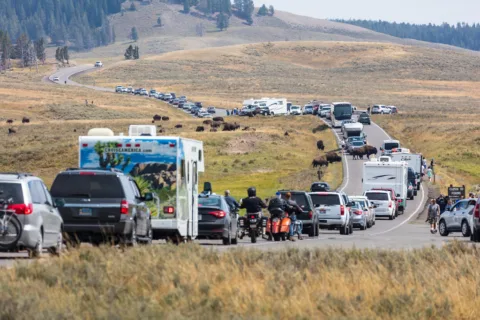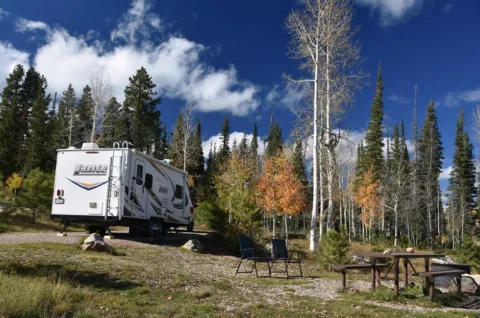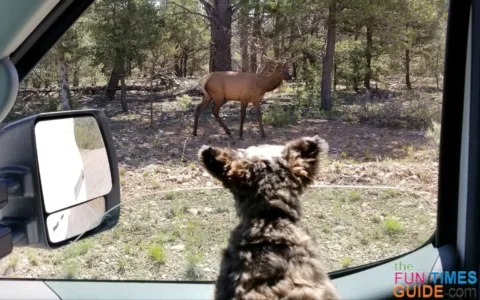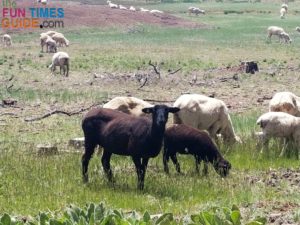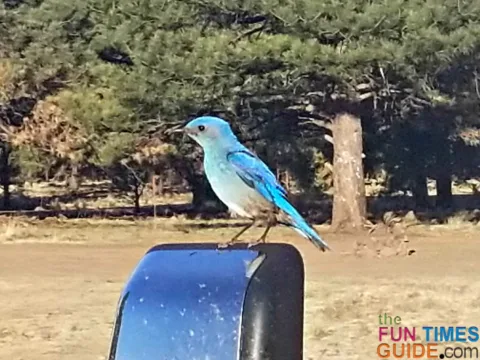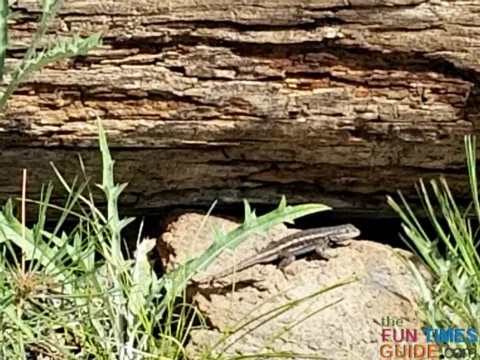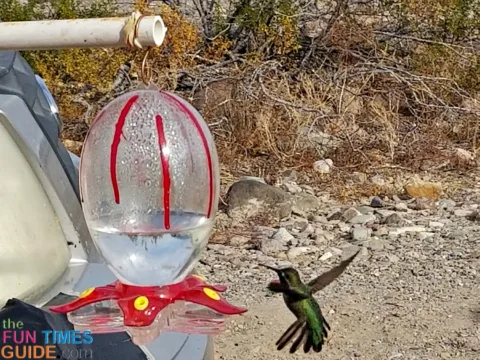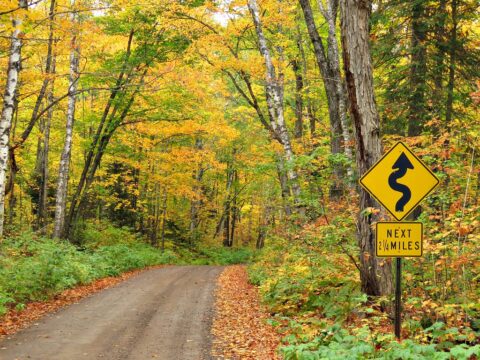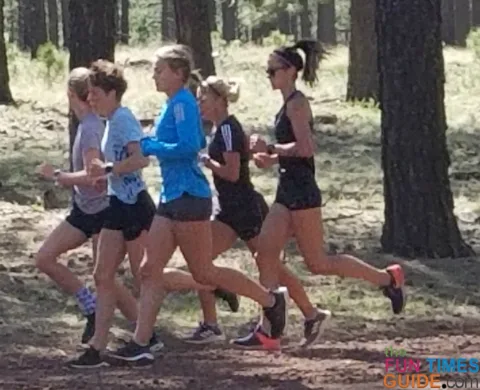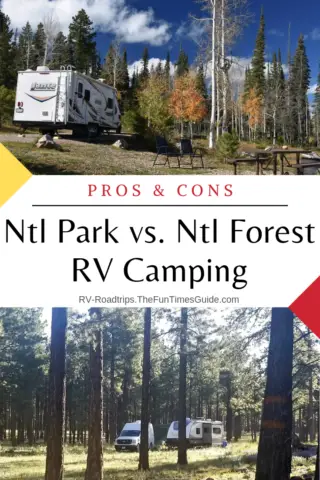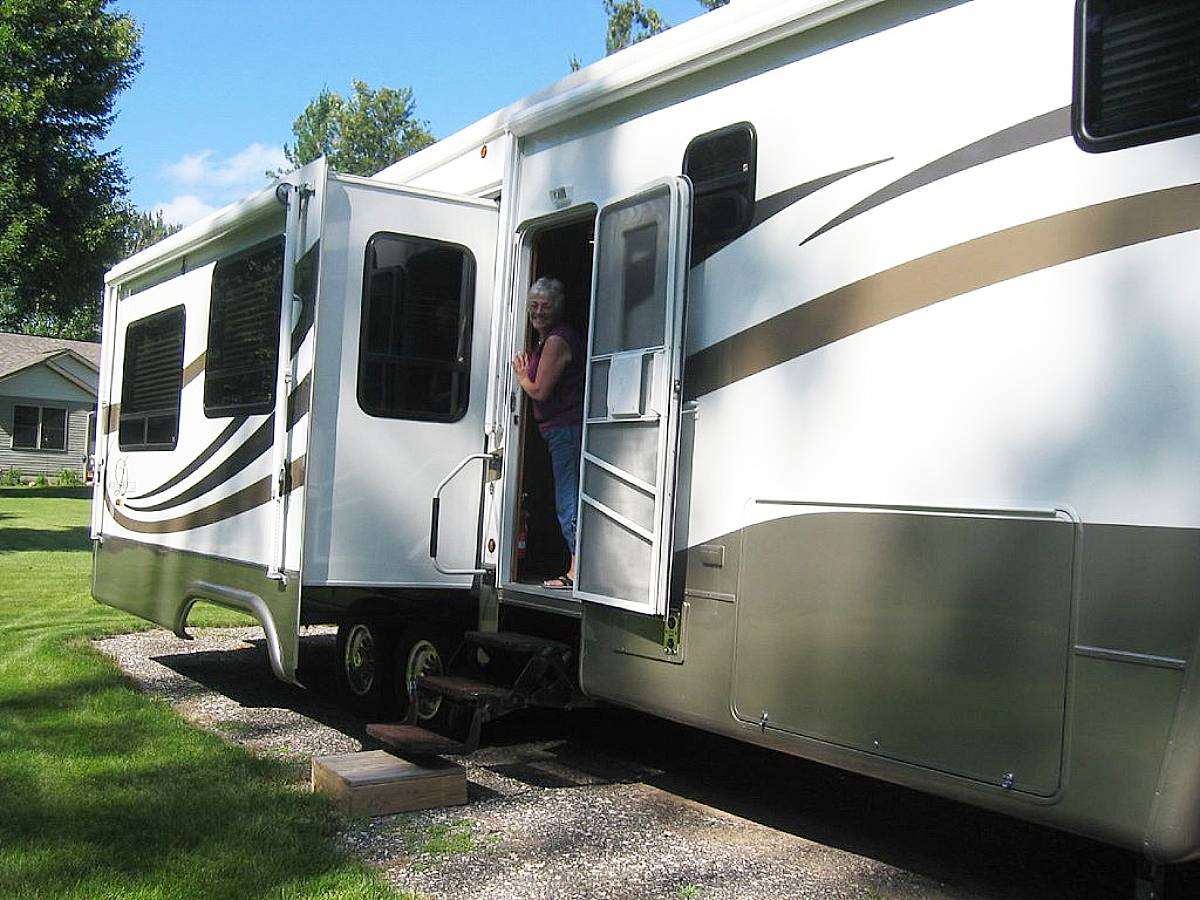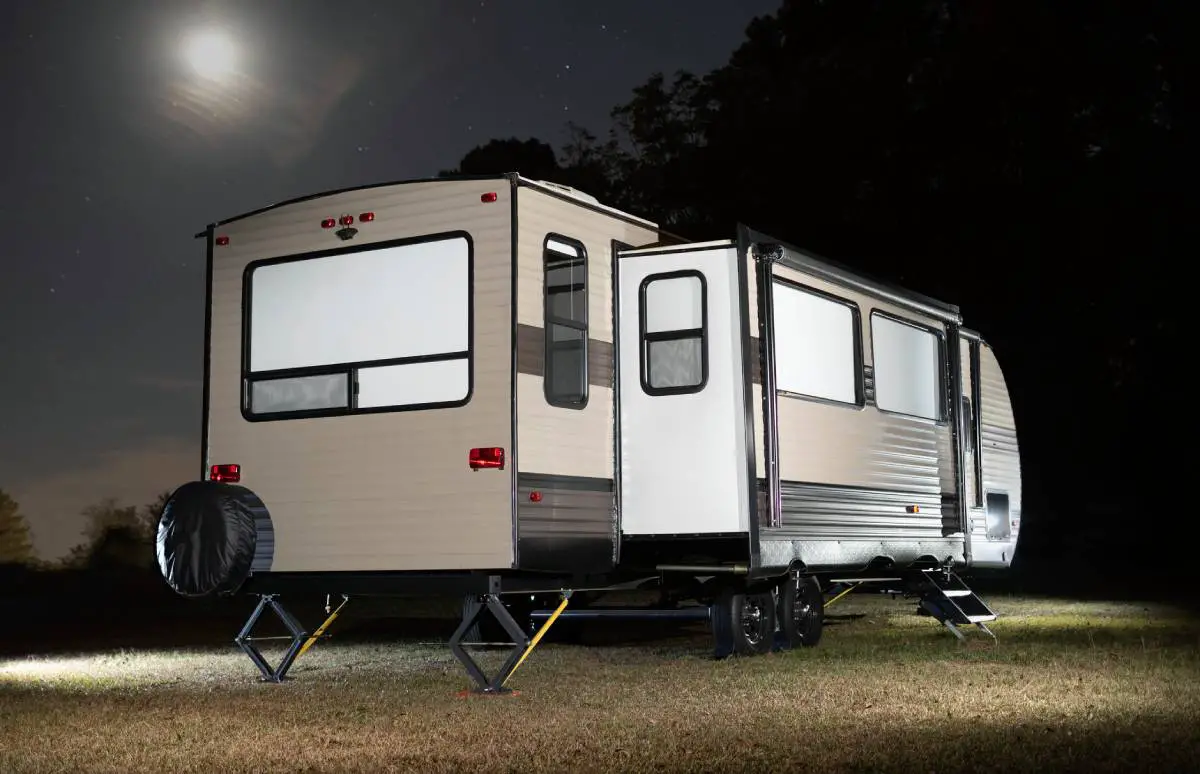Trying to decide between National Forest camping vs. National Park camping?
Maybe I can help.
I’m a bit biased toward National Forest camping. (I spent this last summer enjoying free living, courtesy of National Forests.) But, having done both, I can attest to the fact that there are pros and cons to each.
RV Camping Near National Parks
First, let me set the picture for you…
There is nothing more awe-inspiring than to look over the edge, down into the mile deep abyss known as the Grand Canyon.
The vistas are immense. The views can’t be imagined. There is no lens that can duplicate what the human eye can capture in this unique and wondrous place. The name Grand says it all. There is no other hole in the ground that can come close to matching the grandness of the Grand Canyon.
After you’ve walked across a half dozen immense parking lots through the endless mass of humanity and patiently waited your turn to get up to the guardrail for your chance at this great view… you might be wondering where to spend the night.
I hope your pockets are deep, staying anywhere around the Grand Canyon is going to be pricey!
The National Park System is designed to showcase the most spectacular features that nature provides across this great land to the largest percentage of the traveling public each year. If it was cheap, everyone would stay there — and the National Parks can’t handle that much traffic.
So, if you want to stay in or near the park, you have 2 options:
Let’s weigh the pros and cons National Forest camping vs. National Park camping…
National Park Camping
What The RV Campgrounds Are Like
There is no such thing as boondocking in your RV inside National Parks.
Instead, there are organized campgrounds — where you can rent a spot for the night, a weekend, or a week. Many of the National Park campgrounds have size requirements that exclude larger motorhomes.
The amenities vary. The one thing that is true about all National Park campgrounds is… you need to make reservations well in advance of your visit!
What The RV Backcountry Camping Is Like
Camping in the wild, so to speak, is allowed only in specific areas. It requires a backcountry permit. Again, it’s recommended that you make these arrangements well in advance of your visit.
These are generalizations that, for the most part, are the same at all National Park venues. The Grand Canyon, Yellowstone, Rocky Mountain National Park, Badlands of South Dakota — they all have limited camping availability, an overabundance of visitors, and are immensely popular.
Pro’s to National Park Camping
- You can plan your visit months in advance, assuring that you will have a comfortable clean space reserved just for you.
- The amenities vary by campground — so you can tailor your stay to match your needs.
- Hotels, motels, and restaurants are usually conveniently located near the to entrances to many of the larger National Parks.
- Most anything can be arranged ahead of time, all it takes is money.
- Many National Parks have tour buses available to take the stress out of having to drive throughout the park.
Con’s to National Park Camping
- The crowds can be overwhelming. No matter where you go there will be large groups of people and lines to contend with.
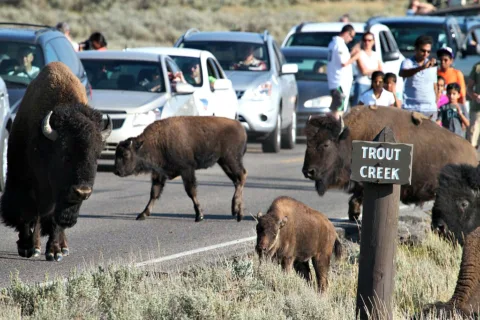
- Reservations may give you a place to stay, but that takes all the spontaneity out of your trip. If your day has you wandering off course, there is no room for flexibility in the National Park System.
- When you get back home, you will notice a sizable weight loss and your wallet will be a whole lot lighter. Entrance permits, camping site fees, and souvenirs all add up. Food and gas anywhere near a National Park is expensive — and within the park itself, it’s outrageous.
- The traffic is often like being stuck in an endless line that never seems to move. Every animal that comes out of the woods puts a stop to traffic movement while everyone gets out and snaps pictures. This alone is a dangerous situation — because the poor beasts become numb to the intrusion of humanity and strike back every so often when pushed beyond their tolerances.
Does all this mean that your dream trip to see the wonders of this country and nature needs to be put on the back burner?
No! There’s another great alternative for camping near the National Parks…
National Forest Camping
What The RV Backcountry Camping Is Like
You can experience most of the same views and all of the same wonders of nature without actually setting foot in a National Park.
Surrounding most National Parks are many thousands of acres of National Forest land.
Camping on National Forest land is not only allowed — it’s encouraged. Yes, you need to follow the National Forest Camping Rules, but overall camping on National Forest land is convenient, quiet, and most of all it’s FREE!
Pretty much the same wildlife that is in the nearby National Park is equally prevalent in the surrounding National Forest. The biggest difference is there will be a whole lot less humans in the mix.
Pro’s to National Forest Camping
- There is no cost. Dispersed camping on National Forest lands is free.
- There are no reservations. It’s first come, first serve — but I’ve never not been able to find a suitable spot in the area I desired.
- You can stay up to 14 days… for free.
- Generally, it’s much quieter and wildlife is more likely to ignore you and wander close by.
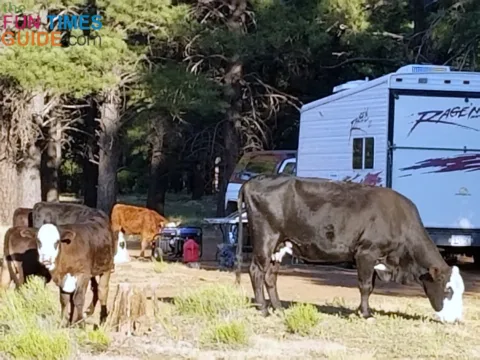
- Generators are kept at a minimum and campers make it a practice not to crowd each other. The world of National Forest boondocking is one of respect — both for your neighbor and the wildlife around you.
- It’s reasonable to expect that, with a little research, good camping can be had close by to most needed retail establishments. Staying within 5 miles of a Walmart store and a Domino’s pizza can be done in a number of areas.
- Wildlife can be as varied as a little gecko on a log or a herd of 100 elk munching grass in the morning sun — all within yards of your campsite. Hang out a hummingbird feeder, and in minutes you will have numerous birds fighting for their shot at the nectar.
Con’s to National Forest Camping
- There are no amenities.
- You need to pack out what you bring in. Being self-contained is a must.
- These are unimproved forest roads — so you need to always be aware of weather conditions. You could find yourself stranded, requiring a very expensive tow if unexpected weather catches you.
- If shopping or social gatherings are your thing, this isn’t the place to go. But it’s wonderful if you’re searching for peace, quiet, and tranquility.
In fact, it’s so peaceful out here, the local college girls cross country team uses the Forest Roads in this area to practice on Saturday mornings:
The Bottom Line
Which option is best can only be determined by you.
Personally, I prefer National Forest camping, but there are plenty of good reasons to enjoy National Park camping as well.
I shot the following video to give you a glimpse of the wonders of nature that can be found everywhere within the National Forests:
Like this post? Save it to read again later… or share with others on Pinterest!
I’ve been involved in RVing for over 50 years — including camping, building, repairing, and even selling RVs and motorhomes. I’ve owned, used, and repaired almost every class and style of RV ever made. I do all of my own repair work. My other interests include cooking, living with an aging dog, and dealing with diabetic issues. If you can combine a grease monkey with a computer geek, throw in a touch of information nut and organization freak, combined with a little bit of storyteller… you’ve got a good idea of who I am. To date, I’ve shared my RV knowledge in over 300 articles here at The Fun Times Guide! Many of them have over 25K shares.

